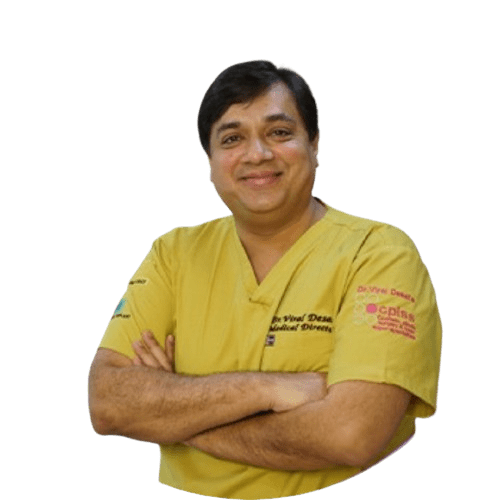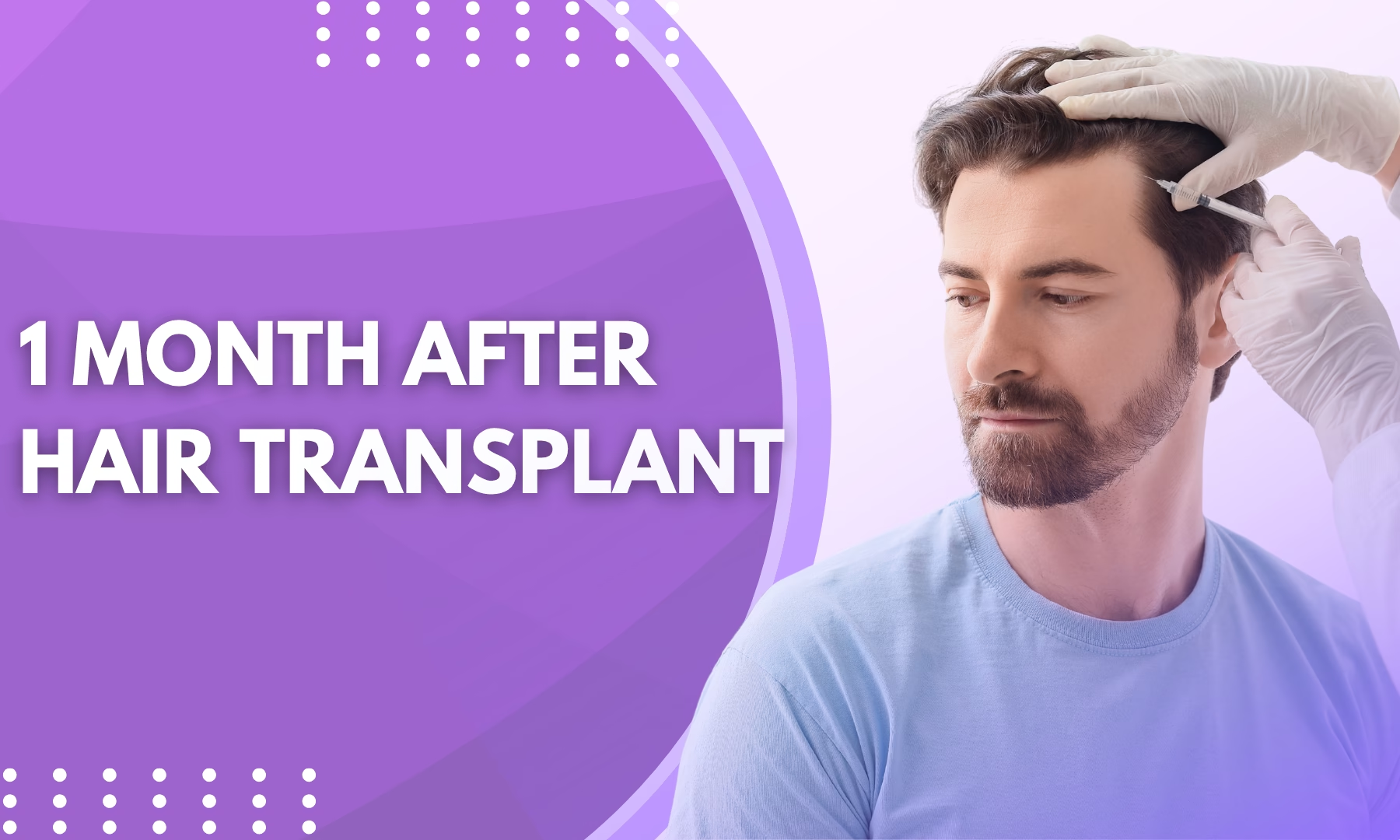
Hair transplantation is a highly effective solution for individuals experiencing hair loss, offering long-term results that restore confidence and natural hairlines. However, many patients are curious about what happens after the procedure, especially 1 month after hair transplant. At this stage, it’s common to wonder about the growth process, scalp care, and the changes you should expect in the following weeks.
According to Dr. Viral Desai, a well-known plastic and cosmetic surgeon in Mumbai, The first month of post-surgery is critical in recovery, where the patient undergoes shedding and early signs of new hair growth. Patience and proper care will ensure the desired end result of the surgery.
Dr. Desai specializes in advanced hair transplant surgeries, including FUE. Having years of experience, Dr. Desai combines advanced techniques with a personal touch to obtain best results. Whether you’re considering a hair transplant in Mumbai or navigating the recovery phase, Dr. Viral Desai will provide expert guidance at every stage.
Curious about hair growth 1 month after your transplant? Let’s explore what you can expect during this early stage.
What to Expect in Hair Growth 1 Month After Transplant?
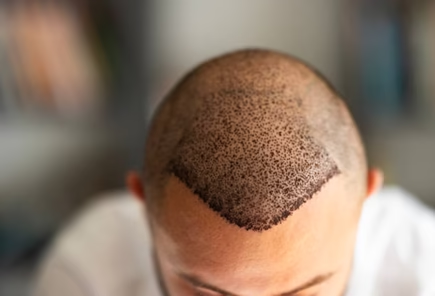
It is quite normal for patients to undergo a shedding phase at around 1 month following a hair transplant. This is considered normal and can also be referred to as “shock loss.” During this time, all the transplanted hair follicles may shed at any time as part of their natural cycle, before new hair starts growing. In many cases, after shedding, patients start to notice the emergence of fine hair from transplanted follicles.
“Patience is key,” Dr. Desai adds. “First month can feel like a waiting game, but the results will show up over time.” You might notice hair growth in about second or third month, though full effects may take up to a year to be perceived.

Wondering how your scalp will feel a month post-transplant? Let’s discuss the common sensations and healing progress.
How Does the Scalp Feel 1 Month After Hair Transplant?
After 1 month, the scalp typically begins to heal, and most of the discomfort from the initial procedure will subside. However, you may still experience mild sensitivity, itching, or dryness in the transplanted area. These sensations are part of the healing process and should gradually diminish over time.
Dr. Desai explains, “It’s essential to keep your scalp moisturized and follow your post-operative care instructions to prevent discomfort and ensure the healing process goes smoothly.” If the discomfort worsens or becomes painful, it’s essential to seek expert attention.
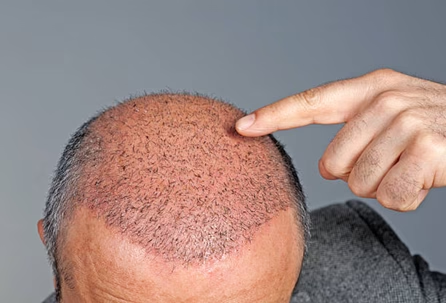
How should you care for your scalp 1 month after hair transplant? Let’s explore the best tips for maintaining a healthy, recovering scalp.
1 Month Post-Transplant: Scalp Care Tips

By the time you’re 1-month post-transplant, your scalp should be well on its way to healing. Here are some essential scalp care tips:
Gentle Cleaning
Use a mild, recommended shampoo to wash your hair. Avoid scrubbing the transplanted area.
Moisturize
Keeping your scalp hydrated helps to prevent dryness and irritation.
Avoid Sun Exposure
Protect your scalp from direct sunlight, as it can cause irritation or damage to healing follicles.
Massage Gently
Light scalp massages can improve circulation and promote hair growth, but avoid applying too much pressure.
Dr. Viral Desai, an acclaimed cosmetic and plastic surgeon in Mumbai, advises, “Be diligent with your care, and follow the instructions provided by your surgeon. Proper scalp care will enhance the growth of your new hair and minimize potential complications.”
Want to know how your lifestyle can support hair growth during recovery? Let’s discover the habits that promote optimal hair regrowth.
What Lifestyle Habits Support Hair Growth at 1 Month?

In addition to adhering to your surgeon’s advice, you can improve your new hair by adopting healthy habits. The following are a few lifestyle changes:
Healthy Diet
A diet rich in vitamins and minerals, especially biotin, zinc, and vitamin D, can help nourish your hair follicles.
Hydration
Drinking plenty of water keeps your scalp hydrated and supports overall health.
Avoid Smoking
Smoking can hinder circulation and may slow down the healing process.
Stress Management
High-stress levels can impede hair growth. Practice relaxation techniques like meditation or yoga.
Dr. Desai notes, “Incorporating these habits into your routine can significantly impact the speed and quality of your hair recovery.”
Unsure when it’s time to seek expert advice after a hair transplant? Let’s discuss the signs that require professional attention.
When to Consult a Surgeon
It’s crucial to consult your surgeon if you notice any of the following:
- Severe pain or discomfort that doesn’t improve.
- Significant swelling or redness that doesn’t subside.
- Unusual scalp conditions, such as infections or excessive scabbing.
- Lack of hair growth after several months.
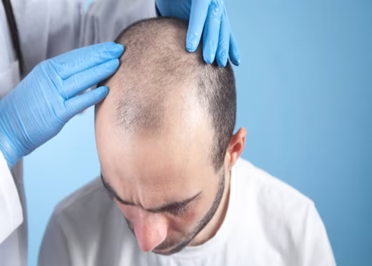
Dr. Desai advises, “If you notice any of these issues or if you’re simply unsure about your recovery, it’s best to consult your surgeon. Early intervention can help prevent complications.”
Conclusion
The first month after a hair transplant is an important time for recovery and hair growth. Although you may experience shedding, mild discomfort, and gradual hair regrowth, following proper scalp care and adopting healthy lifestyle habits can support a successful outcome. If you ever feel uncertain or notice unusual symptoms, don’t hesitate to consult a professional like Dr. Viral Desai.
Frequently Asked Questions
1. How much hair should I see growing 1 month after hair transplant?
Most patients experience shedding during the first month, with fine, new hair beginning to emerge toward the end of the month.
2. Is it normal for the transplanted hair to fall out after 1 month?
Yes, this is called “shock loss,” and it’s a normal part of the process. New hair will start growing soon after.
3. How long will I experience scalp sensitivity?
Scalp sensitivity should start to improve after 1 month, but it may take a few more weeks to fully subside.
4. When can I resume physical activities after a hair transplant?
It’s generally safe to resume light activities after 1 month, but avoid strenuous exercises that could impact healing.
5. How long does it take to see full results from a hair transplant?
Full results can take up to 12-18 months. Patience is key during this recovery process.
Reference links:
https://www.plasticsurgery.org/cosmetic-procedures/hair-transplantation-and-restoration/recovery
https://my.clevelandclinic.org/health/treatments/21519-hair-transplant
Disclaimer: The information shared in this content is for educational purposes and not for promotional use.


